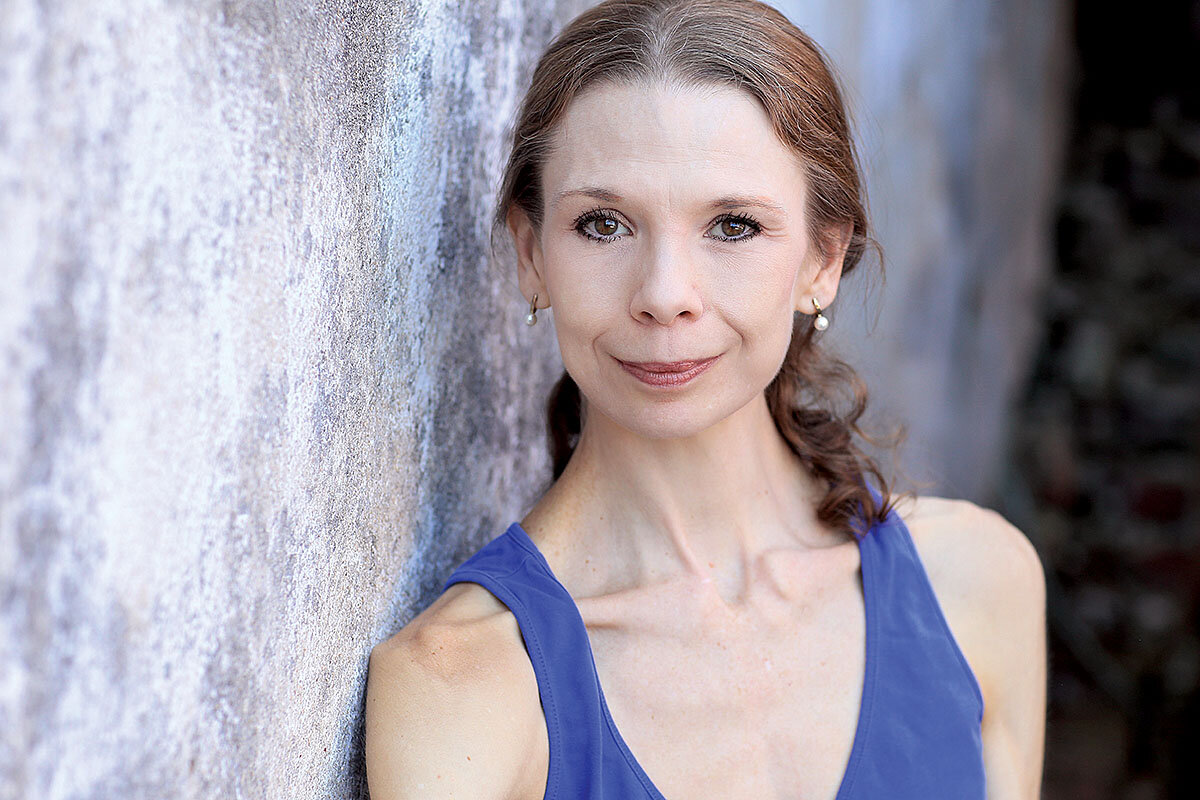Q&A: An ‘everyday’ life in dance proves something quite extraordinary
Loading...
In her memoir, ‚ÄúBeing a Ballerina: The Power and Perfection of a Dancing Life,‚Äù Gavin Larsen calls herself an ‚Äúeveryday‚Äù ballerina. Before retiring in 2010, she danced professionally in a number of well-regarded companies in the United States and Canada, including Oregon Ballet Theatre, where she was a principal dancer. In the book, she relates episodes from her childhood training at the School of American Ballet in New York all the way up through her successful 18-year career. She illuminates what it means to dedicate oneself to an art form ‚Äì the daily navigation between pain and joy, between total immersion and having a balanced life. Unlike the gossipy celebrity tell-all, ‚ÄúBeing a Ballerina‚Äù is a personal chronicle of a professional dancing life that is as accessible as it is engaging.¬Ý
Q:¬ÝThe vast majority of aspiring young dancers don‚Äôt become superstars, which makes your story so relatable. Despite notable success as a principal dancer, you still call yourself an ‚Äúeveryday‚Äù dancer. Why?
I wanted to highlight the thousands of [dancers] who rose to success, but are not superstars, who straddle these two worlds – in [this] exalted place, but as kind of worker bees. That crew of us is the untold story. So many dancer memoirs are by the famous names who had hardship and remarkable elements to their stories, and I had none of that. I felt the drama of a life in dance lies in the everydayness of it, the extraordinary in the ordinary. This is an interesting subset of ballet culture that nondancers are not really aware of.
Why We Wrote This
Success stories often come with fame and big defining moments. But another version of that story comes from constancy, building upon less exciting, everyday moments. “Being a Ballerina” shows us what it takes to master one’s art – in a way many of us can relate to.
Q:¬ÝI don‚Äôt think most people realize that ballet demands not just strength and technical facility but incredible stamina. You write of dropping to your knees in the wings after one particularly rigorous performance. How difficult was it?
That’s another element I really wanted to hit home. Ballet is bone-crushingly hard, physically and mentally. People have an impression of a ballerina that it’s lovely and fun and your toes bleed, but that’s not really it. It’s really the highest echelon of athletic training and performance as well as an art form. I wanted to be detailed, take readers through what you do with your body minute by minute working through a piece of choreography.
Q:¬ÝYou‚Äôre quite candid about performance mishaps. When you know that one misstep can be career-ending, how do you let go of that fear of physical failure to dance full out, to take risks?
It’s really hard, and honestly you can’t always do it. As the years went on, it got harder, and that was a big mental component to stopping when I did. But you’re so skilled by that point that you’re used to feeling how to make it work. We used to say “We’ve gotta go make it happen” instead of just letting it happen.
Q:¬ÝPop culture sensationalizes the competition aspects of ballet. What was your experience?
That’s another common misperception that I really despise. Yes, there’s built-in competition, in that there are many more dancers than jobs and coveted roles, and you’re always measuring yourself up against other dancers. But, and I daresay 95% of dancers would agree, the majority of us experience an incredible support system. It’s this community and we all understand each other. The camaraderie in a ballet company is as strong as a military bond – it’s that tight and supportive. And that crew mentality extends beyond the dancers. There really is this neat web of people that all come together to make this one thing happen. The applause is not all for me.
Q:¬ÝYou don‚Äôt divulge much about your personal life until the end. Was that deliberate?
I wanted to highlight the dancing life. I did add some personal [elements] late in the book and was more forthcoming. But I was unique in having an extra heightened degree of single-mindedness ‚Äì I didn‚Äôt get married, have children, or go to school while dancing. But I also didn‚Äôt eat, drink, and sleep ballet 24 hours a day.¬Ý
Q:¬ÝHow have you adjusted to retirement, which you refer to as ‚Äúa small death‚Äù?
Writing this book helped a lot. It unfolded over 10 years, helping ease me out of a performing identity. That ballerina is still there; she’s just quiet right now. There are so many things about the performance life and the work that I don’t miss. Any moment I feel a pang for the exhilaration of performing, I think of how fleeting those moments are.
Q:¬ÝWhat‚Äôs your best advice for aspiring ballet dancers?
If you really, really feel that pilot light in you, you can find a way to make it your life. I’ve seen too many people give up. There’s a job out there for every dancer. It may take more tenacity or time, but be stubborn and keep dancing.
Q:¬ÝYou now live and teach in Asheville, North Carolina, and end the book with a chapter about teaching avocational dancers, making ballet more accessible. How does the book relate to that?
I love teaching adults and recreational dancers. I hope the book gives ballet a more universal appeal. Everyone can dance, and everyone should dance.¬Ý




